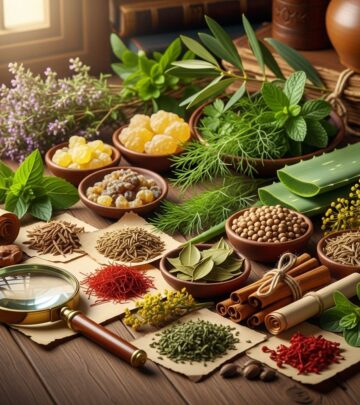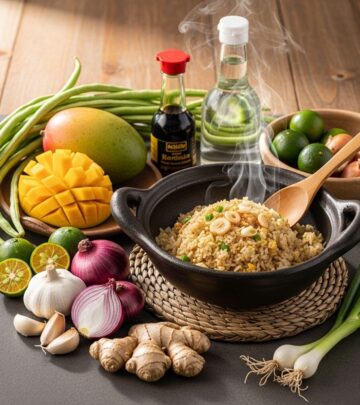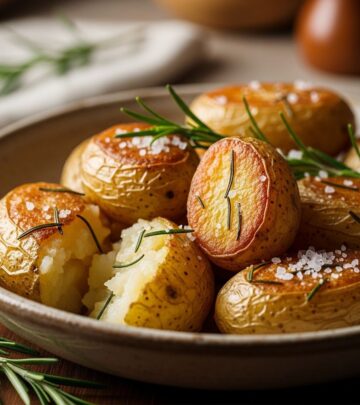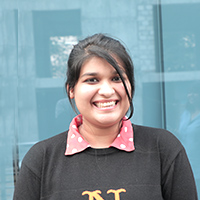Best Perennial Flowers: 31 Plants For Every Part Of Your Yard
Your essential guide to the most reliable, colorful, and easy-care perennials for every corner of your garden.

Image: HearthJunction Design Team
31 Best Perennial Flowers and Plants for Every Part of Your Yard
Perennials are the backbone of a resilient, beautiful garden. Unlike annuals, these steadfast plants return year after year, providing dependable color, texture, and interest. Whether your garden basks in sun, sits in dense shade, or faces challenging conditions, there’s a perennial flower or plant ready to thrive. Our carefully curated guide features 31 all-star perennials, each offering unique attributes—from pollinator appeal and drought tolerance to striking foliage and long-lasting blooms.
Why Choose Perennials?
- Low Maintenance: Plant once and enjoy for years with minimal care.
- Cost Effective: Many perennials spread or self-seed over time, reducing the need to buy new plants annually.
- Season-Long Interest: With careful selection, you can create a garden that blooms from early spring to late fall.
- Wildlife Friendly: Many perennials are crucial sources of food and shelter for bees, butterflies, and birds.
Top 31 Perennial Flowers and Plants
1. Hostas
Celebrated for their lush foliage, hostas light up the shadiest corners of your yard. They come in a range of sizes and colors, from deep blue-greens to creamy variegations. Hostas are nearly indestructible and thrive in shade, making them an ideal groundcover under trees and along borders.
- Best for: Deep to partial shade
- Features: Striking leaves in varied shades; shade tolerant
2. Hydrangea
Few shrubs have the garden impact of hydrangeas. With their globe-like clusters of white, pink, or blue flowers, they deliver a dramatic burst of summer color. Many varieties bloom on new wood, so regular pruning keeps them thriving year after year.
- Best for: Partial shade to sun
- Features: Large, showy blooms; long blooming season
3. Perennial Geranium (Cranesbill)
Not to be confused with the annual geranium, perennial geraniums are robust ground covers with dainty, colorful flowers. Their mounding habit makes them ideal for edging borders or filling gaps in sunny or partially shaded beds.
- Best for: Sun to part shade
- Features: Spreads rapidly; long blooming period
4. Helenium (“Sneezeweed”)
This cheerful daisy-like flower lights up borders with fiery oranges, yellows, and reds. Despite its nickname, it won’t cause allergies. Helenium is a magnet for pollinators and thrives in full sun.
- Best for: Full sun
- Features: Summer blooms in hot colors; pollinator magnet
5. Coreopsis
Also called tickseed, coreopsis produces masses of bright yellow or pink blooms. Airy and cheerful, they dance atop wiry stems and bloom profusely in full sun. Butterflies love them!
- Best for: Full sun
- Features: Reliable, profuse bloomer; attracts butterflies
6. Balloon Flower (Platycodon)
Budding like little balloons before opening, these unique flowers add whimsy to the perennial bed. They come in shades of blue, pink, and white, and tolerate some shade as well as full sun.
- Best for: Full sun to part shade
- Features: Unusual balloon-shaped buds; blooms midsummer
7. Japanese Painted Fern
Turn the spotlight on shade gardens with Japanese painted ferns. Their silvery, burgundy-tinged fronds create instant elegance with zero fuss. These ferns are deer and rabbit resistant for easy care.
- Best for: Shade to part shade
- Features: Colorful, low-maintenance; critter resistant
8. Aster
Asters are a must-have for late-season color, blooming when most flowers fade. Their daisy-like blooms in shades of blue, purple, and pink are essential for pollinators storing up for winter. Many species are native and long-lived, persisting for a decade or more in full sun.
- Best for: Full sun
- Features: Fall blooming; attracts bees and butterflies
9. Astilbe
Astilbe shines in shade gardens with its feathery, plume-like flowers. Blooming in hues from white and pink to deep fuchsia, these perennials add vertical interest and texture. Butterflies love astilbe too!
- Best for: Shade to part shade
- Features: Showy, feathery blooms; thrives where many flowers won’t
10. Catmint (Nepeta)
Catmint is famous for its resilience, drought tolerance, and haze of purple blooms that last from late spring to early fall. Its aromatic foliage is rarely bothered by pests, making it an indispensable sun-loving perennial.
- Best for: Full sun to part shade
- Features: Long blooming; pollinator friendly; drought tolerant
11. Penstemon
With tubular flowers in shades of red, pink, purple, and white, penstemons are favorites of hummingbirds and bees. Select varieties with striking burgundy foliage for added visual interest.
- Best for: Full sun
- Features: Hummingbird magnet; rich foliage options
12. Heuchera (Coral Bells)
Famed for its dazzling foliage, heuchera’s scalloped leaves range from deep burgundy to lime green. The tiny flower spikes in summer are a bonus. These versatile plants thrive in sun or shade and are not appealing to deer or rabbits.
- Best for: Full sun to part shade
- Features: Stunning foliage; deer and rabbit resistant
13. Tiarella (Foamflower)
This woodland native illuminates shade gardens with frothy, delicate flower spikes in late spring. Foamflower’s handsome foliage delivers interest across seasons, even after blooming ends.
- Best for: Part to full shade
- Features: Airy blooms; shade loving
14. Coneflower (Echinacea)
Cones of purple, pink, or white petal rays surround a prominent center in these resilient prairie natives. Coneflowers are pollinator superstars and thrive in sunny, dry conditions.
- Best for: Full sun
- Features: Drought tolerant; attracts butterflies
15. Black-Eyed Susan (Rudbeckia)
One of the most cheerful and widely grown perennials, black-eyed Susans paint the garden with golden yellow petals and dark centers. Their robust nature ensures years of late summer color.
- Best for: Full sun
- Features: Reliable and easy; long summer blooms
16. Blanket Flower (Gaillardia)
This sun-loving perennial boasts red, orange, and yellow daisy-like blooms all summer long. Blanket flower is drought tolerant and thrives in poor soils where others might fail.
- Best for: Full sun
- Features: Heat and drought tolerant; summer-long blooms
17. Chrysanthemum
Chrysanthemums, or “mums,” are fall garden staples, providing vibrant color when most perennials have faded. Their tightly packed petals come in a rainbow of shades and attract late-season pollinators.
- Best for: Full sun
- Features: Fall blooming; great in bouquets
18. Shasta Daisy
Classic white petals and sunny yellow centers make Shasta daisies a timeless garden favorite. These perennials bloom for weeks and add a fresh, clean look to borders and beds.
- Best for: Full sun
- Features: Classic daisy shape; long bloom time
19. Daylily (Hemerocallis)
Daylilies are famed for their hardiness and adaptability. Blooms last only a day, but each plant produces a flurry of flowers over weeks. Available in a dizzying array of colors, they’re nearly foolproof for any garden.
- Best for: Full sun to part shade
- Features: Tolerates poor soil; super low maintenance
20. Peony
Peonies offer lush, fragrant blooms in late spring to early summer. With proper care, these long-lived perennials can thrive in the same spot for decades, making them a true investment in beauty.
- Best for: Full sun to part shade
- Features: Fragrant, showy blooms; extremely long lived
21. Sedum (Stonecrop)
Sedums are succulents known for their fleshy leaves and star-shaped blooms that attract pollinators. Hardy and drought tolerant, they’re ideal for rock gardens and sun-soaked beds.
- Best for: Full sun
- Features: Drought tolerant; attracts bees and butterflies
22. Bee Balm (Monarda)
With frilly, tubular blooms in shades of red, pink, or purple, bee balm is a hummingbird and butterfly favorite. It’s also fragrant and can be used to make herbal teas.
- Best for: Full sun to part shade
- Features: Attracts pollinators; edible flowers and leaves
23. Phlox
Phlox comes in both tall and low-growing varieties, suiting borders and rock gardens alike. Their fragrant, colorful blooms are a summer garden highlight, often visited by butterflies and hummingbirds.
- Best for: Full sun to part shade
- Features: Fragrant and vibrant blooms; attracts wildlife
24. Russian Sage (Perovskia)
This drought-tolerant perennial features clouds of blue flowers over silvery foliage. Russian sage provides airy texture and color from midsummer to fall, thriving in the hottest, driest spots.
- Best for: Full sun
- Features: Tolerates drought and heat; long blooming
25. Salvia
Salvia is prized for its spikes of purple, blue, or red blooms and aromatic foliage. It draws hummingbirds and bees to any sunny border and reblooms with a quick trim.
- Best for: Full sun
- Features: Pollinator-friendly; fragrant leaves
26. Yarrow (Achillea)
Yarrow’s flat-topped flower clusters attract pollinators and make great cut flowers. Its ferny foliage and drought resistance make it a go-to in wildlife and pollinator gardens.
- Best for: Full sun
- Features: Attracts pollinators; drought tolerant
27. Bleeding Heart (Dicentra)
Spring’s earliest flowers include the whimsical, heart-shaped blooms of bleeding heart. This woodland perennial thrives in shade and adds romance to any under-tree planting.
- Best for: Shade to part shade
- Features: Unique heart-shaped flowers; blooms spring to early summer
28. Lungwort (Pulmonaria)
Lungwort is valued for its silvery-spotted leaves and early clusters of pink or blue flowers. It’s a shade-loving perennial that pairs beautifully with hostas and ferns.
- Best for: Shade to part shade
- Features: Attractive foliage; early blooms
29. Japanese Anemone
Japanese anemones produce elegant, poppy-like flowers in late summer and autumn. Their upright form and delicate blooms brighten shady gardens as the season fades.
- Best for: Part shade
- Features: Fall bloomer; graceful, tall stems
30. Butterfly Weed (Asclepias tuberosa)
Butterfly weed’s orange flowers are a vital nectar source for monarch butterflies and other pollinators. It thrives in hot, dry soils and is a must for wildlife gardens.
- Best for: Full sun
- Features: Monarch host plant; drought tolerant
31. Hellebore
Also known as Lenten rose, hellebore is prized for its early-spring blooms that rise up through the last snows. These shade-loving perennials are deer-resistant and provide year-round interest with evergreen foliage.
- Best for: Shade to part shade
- Features: Evergreen leaves; flowers before most perennials emerge
Quick Reference Guide: Perennial Placement by Sun and Shade
| Sun Lovers | Shade Lovers |
|---|---|
| Coreopsis | Hosta |
| Black-Eyed Susan | Astilbe |
| Coneflower | Japanese Painted Fern |
| Yarrow | Bleeding Heart |
| Russian Sage | Lungwort |
| Blanket Flower | Hellebore |
Designing a Perennial Garden that Blooms All Season
To maximize interest, choose a blend of early, mid, and late-season bloomers. Mix foliage textures, heights, and colors for visual appeal even when not all plants are in flower. Use showy bloomers like coneflower and coreopsis in the sun, and layer hostas and ferns under trees for a lush shade retreat. Consider leaving seed heads in fall to provide food for wildlife and winter interest.
Perennial Care Tips
- Water: Newly planted perennials require regular watering, but once established many are drought tolerant.
- Dividing: Every few years, divide clumps to rejuvenate growth and increase your plant stock.
- Mulch: Apply mulch to conserve moisture and suppress weeds.
- Deadheading: Remove spent flowers to prolong blooms or encourage a tidy look.
Frequently Asked Questions (FAQs)
Q: What is a perennial?
A: Perennials are plants that live more than two years, returning each growing season from their rootstock.
Q: Do I have to replant perennials every year?
A: No, perennials reliably return each year, although some may need division or rejuvenation every few years.
Q: How do I choose the right perennial for my garden?
A: Match the plant’s light and moisture requirements to your yard’s conditions, and consider bloom time and mature size for best results.
Q: Can perennials help pollinators?
A: Absolutely! Many perennials, such as coneflowers, asters, bee balm, and yarrow, are important nectar and pollen sources for bees, butterflies, and hummingbirds.
Q: Are all perennials low maintenance?
A: While many perennials are easy-care, some benefit from division, deadheading, or staking, so always check the needs of the varieties you choose.
Expand Your Garden with Diversity
Perennial gardens thrive on diversity. Blend flower shapes, heights, and bloom seasons for a tapestry of color and texture. Use native species, where possible, to enhance ecological benefits and resilience. With the right mix, you’ll enjoy a yard that’s both beautiful and beneficial for years to come.
References
- https://www.countryliving.com/gardening/garden-ideas/g1143/best-perennials-for-any-yard/
- https://www.southernliving.com/fast-growing-perennials-11758724
- https://www.countryliving.com/gardening/garden-ideas/g1456/fast-growing-vines/
- https://www.bhg.com/gardening/flowers/perennials/top-perennials-for-your-garden/
- https://www.thepioneerwoman.com/home-lifestyle/gardening/g64480143/best-perennial-flowers-plants-garden/
Read full bio of Anjali Sayee











